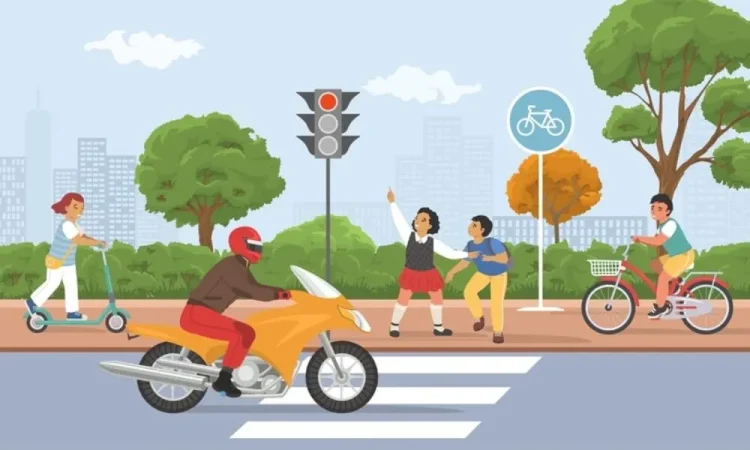: The Stark Reality Behind Car Crash Pictures: A Call for Road Safety Awareness

Car crashes, captured in haunting images, serve as stark reminders of the harsh consequences that result from negligence, recklessness, and a lack of adherence to road safety guidelines. Beyond the shock value, these pictures convey a crucial message that extends beyond the realm of mere entertainment. This article explores the significance of car crash images, delving into the impact they have on society and the urgent need for heightened road safety awareness.
The Power of Visuals:
Images possess a unique ability to evoke emotions and convey messages that words alone often fail to articulate. Car crash pictures, with their visceral impact, serve as a powerful medium to illustrate the severity of road accidents. These visuals can stir empathy, fear, and urgency, prompting viewers to reflect on their own driving habits and the collective responsibility we share in maintaining road safety.
Raising Awareness:
The widespread sharing of car crash pictures on various platforms, including social media, contributes to the dissemination of crucial information regarding the consequences of unsafe driving. By making these visuals accessible to a broad audience, we can effectively raise awareness about the importance of responsible driving behaviors and the devastating aftermath of neglecting road safety guidelines.
Fostering Accountability:
Car crash images play a pivotal role in holding individuals accountable for their actions on the road. When faced with the stark reality of the aftermath, viewers are compelled to acknowledge the potential consequences of their own driving habits. This accountability is essential for promoting a culture of responsible driving and encouraging individuals to prioritize safety over convenience.
The Educational Value:
Beyond their emotional impact, car crash pictures serve as educational tools. Analyzing these images allows for a deeper understanding of the factors contributing to accidents, such as speeding, distracted driving, and impaired judgment. By dissecting the details captured in these visuals, individuals can gain insights into the causes of accidents and, in turn, make informed decisions to mitigate risks on the road.
Encouraging Preventive Measures:
Car crash images act as a call to action, prompting viewers to take preventive measures to reduce the likelihood of accidents. Whether through increased use of seat belts, avoiding distractions while driving, or practicing defensive driving, the lessons drawn from these pictures empower individuals to actively contribute to a safer road environment.
Promoting Advocacy:
The visual impact of car crash pictures extends beyond individual reflection, fostering a collective commitment to road safety advocacy. These images become catalysts for various campaigns and initiatives aimed at creating a safer driving culture. Governments, non-profit organizations, and communities can leverage the emotional resonance of these visuals to garner support for legislative measures and educational programs.
The Thin Line Between Awareness and Sensationalism:
While the dissemination of car crash pictures is essential for fostering awareness, there exists a delicate balance between educating the public and sensationalizing tragedy. It is crucial to approach the sharing of such visuals with sensitivity, ensuring that the primary goal remains the promotion of safety and not the mere exploitation of shock value for entertainment.
Embracing Technology for Change:
In the digital age, technology plays a pivotal role in amplifying the impact of car crash images. Virtual reality (VR) experiences and interactive simulations allow individuals to immerse themselves in the aftermath of accidents, providing a firsthand perspective that can be more impactful than static images. Harnessing technology for educational purposes contributes to a more dynamic and engaging approach to road safety advocacy.
Conclusion:
Car crash pictures serve as a poignant testament to the harsh realities of road accidents, urging society to confront the consequences of unsafe driving behaviors. Through their emotional impact, educational value, and role in fostering accountability, these visuals contribute to a broader effort to enhance road safety awareness. As we continue to grapple with the global challenge of reducing traffic-related incidents, it is essential to leverage the power of visuals responsibly, ensuring that the message remains focused on promoting a culture of responsible driving and collective commitment to safety on the roads.
-
Why are pictures of car crashes important?
Pictures of car crashes are important as they visually depict the severe consequences of road accidents. They serve as powerful tools to raise awareness, promote responsible driving, and educate the public about the potential risks associated with unsafe behaviors on the road.
-
Are car crash pictures meant for entertainment purposes?
No, the primary purpose of car crash pictures is not entertainment. While they can be shocking, their main goal is to evoke emotions that prompt reflection and awareness. Using these images responsibly helps educate individuals and communities about the need for road safety.
-
How can car crash pictures contribute to road safety awareness?
Car crash pictures contribute to road safety awareness by showcasing the real and often devastating outcomes of accidents. They serve as a visual reminder, fostering accountability, encouraging preventive measures, and promoting advocacy for safer driving practices.
-
Do car crash pictures exploit tragedy for sensationalism?
There is a thin line between raising awareness and sensationalism. Responsible sharing of car crash pictures should prioritize educating the public rather than exploiting shock value for entertainment. It is crucial to use these images with sensitivity and a clear focus on promoting safety.
-
What can individuals learn from analyzing car crash pictures?
Analyzing car crash pictures can provide valuable insights into the causes of accidents, such as speeding, distracted driving, or impaired judgment. It helps individuals understand the potential risks on the road, encouraging informed decision-making to reduce accidents.
-
How can technology enhance the impact of car crash images?
Technology, including virtual reality (VR) experiences and interactive simulations, can enhance the impact of car crash images. These tools allow individuals to immerse themselves in the aftermath of accidents, providing a more vivid and impactful understanding of the consequences.
-
Are there potential negative effects of sharing car crash pictures?
Yes, if not shared responsibly, car crash pictures can have negative effects, including desensitization to the severity of accidents or causing unnecessary distress. It is essential to consider the potential emotional impact and use these images judiciously to achieve educational goals.
-
How can communities leverage car crash pictures for advocacy?
Communities can leverage car crash pictures for advocacy by incorporating them into campaigns and initiatives aimed at promoting road safety. These visuals can be powerful tools to garner support for legislative measures, educational programs, and community-driven efforts to reduce accidents.
-
Do car crash pictures violate privacy or ethical considerations?
It is crucial to respect privacy and ethical considerations when using car crash pictures. Obtaining consent, blurring identifiable details, and focusing on the educational aspect rather than sensationalism are important measures to ensure responsible use.
-
What can individuals do to contribute to road safety after seeing car crash pictures?
After seeing car crash pictures, individuals can contribute to road safety by adopting responsible driving habits, avoiding distractions, wearing seat belts, and promoting awareness within their communities. Taking an active role in advocating for safer roads helps create a collective commitment to reducing accidents.





